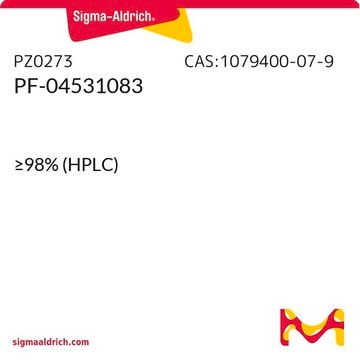SCC243
YUMMER1.7D4 Mouse Melanoma Cell Line
The YUMMER1.7D4 mouse melanoma cell line is a valuable model for studies of immune checkpoint inhibition and mechanisms of anti-tumor responses.
Sinónimos:
Mouse Melanoma Cells, YUMMER1.7D4 Cells
Iniciar sesiónpara Ver la Fijación de precios por contrato y de la organización
About This Item
Código UNSPSC:
41106514
NACRES:
NA.81
Productos recomendados
aplicaciones
cell analysis
Descripción general
The YUMMER1.7D4 mouse melanoma cell line is both immunocompetent and reflective of the somatic mutations common in melanomas. YUMMER1.7D4 carries three driver mutations of melanoma: Braf V600E, Pten -/- and Cdkn2 -/- (1,2). In addition, the YUMMER1.7D4 cell line harbors a high frequency of stable UV-induced somatic mutations which have been shown to stimulate host adaptive immune response (3). YUMMER1.7D4 cells are diploid, allowing for enhanced knockout frequency in CRISPR-based screens. The unique features of the YUMMER1.7D4 cell line make it a valuable model for studies of immune checkpoint inhibition and mechanisms of anti-tumor responses.
<bold>Source:</bold>
The YUMMER1.7D4 mouse melanoma cell line is a diploid clonal isolate from YUMM1.7D4 cells exposed to UVB radiation. The original YUMM1.7 cell line was derived from a 4-hydroxytamoxifen-induced melanoma tumor in a male C57/B1/6 mouse into which mutations from the Braf/Pten genetically-engineered mouse model had been introduced via backcrossing (1). The YUMMER1.7D4 cell line harbors the Braf V600E mutation and is homozygous negative for wild-type Pten and Cdkn2 (3).
Research Category:
Cancer
<bold>Source:</bold>
The YUMMER1.7D4 mouse melanoma cell line is a diploid clonal isolate from YUMM1.7D4 cells exposed to UVB radiation. The original YUMM1.7 cell line was derived from a 4-hydroxytamoxifen-induced melanoma tumor in a male C57/B1/6 mouse into which mutations from the Braf/Pten genetically-engineered mouse model had been introduced via backcrossing (1). The YUMMER1.7D4 cell line harbors the Braf V600E mutation and is homozygous negative for wild-type Pten and Cdkn2 (3).
Research Category:
Cancer
Origen línea celular
Mouse, Cancer Cells
Envase
≥1X106 cells/vial
Almacenamiento y estabilidad
Store in liquid nitrogen. The cells can be cultured for at least 10 passages after initial thawing without significantly affecting the cell marker expression and functionality.
Otras notas
This product is intended for sale and sold solely to academic institutions for internal academic research use per the terms of the “Academic Use Agreement” as detailed in the product documentation. For information regarding any other use, please contact licensing@emdmillipore.com.
Cláusula de descargo de responsabilidad
This product contains genetically modified organisms (GMO).
Within the EU GMOs are regulated by Directives 2001/18/EC and 2009/41/EC of the European Parliament and of the Council and their national implementation in the member States respectively. Unless otherwise stated in our catalog or other company documentation accompanying the product(s), our products are intended for research use only and are not to be used for any other purpose, which includes but is not limited to, unauthorized commercial uses, in vitro diagnostic uses, ex vivo or in vivo therapeutic uses or any type of consumption or application to humans or animals.
Within the EU GMOs are regulated by Directives 2001/18/EC and 2009/41/EC of the European Parliament and of the Council and their national implementation in the member States respectively. Unless otherwise stated in our catalog or other company documentation accompanying the product(s), our products are intended for research use only and are not to be used for any other purpose, which includes but is not limited to, unauthorized commercial uses, in vitro diagnostic uses, ex vivo or in vivo therapeutic uses or any type of consumption or application to humans or animals.
Código de clase de almacenamiento
10 - Combustible liquids
Clase de riesgo para el agua (WGK)
WGK 1
Punto de inflamabilidad (°F)
Not applicable
Punto de inflamabilidad (°C)
Not applicable
Certificados de análisis (COA)
Busque Certificados de análisis (COA) introduciendo el número de lote del producto. Los números de lote se encuentran en la etiqueta del producto después de las palabras «Lot» o «Batch»
¿Ya tiene este producto?
Encuentre la documentación para los productos que ha comprado recientemente en la Biblioteca de documentos.
Nuestro equipo de científicos tiene experiencia en todas las áreas de investigación: Ciencias de la vida, Ciencia de los materiales, Síntesis química, Cromatografía, Analítica y muchas otras.
Póngase en contacto con el Servicio técnico






